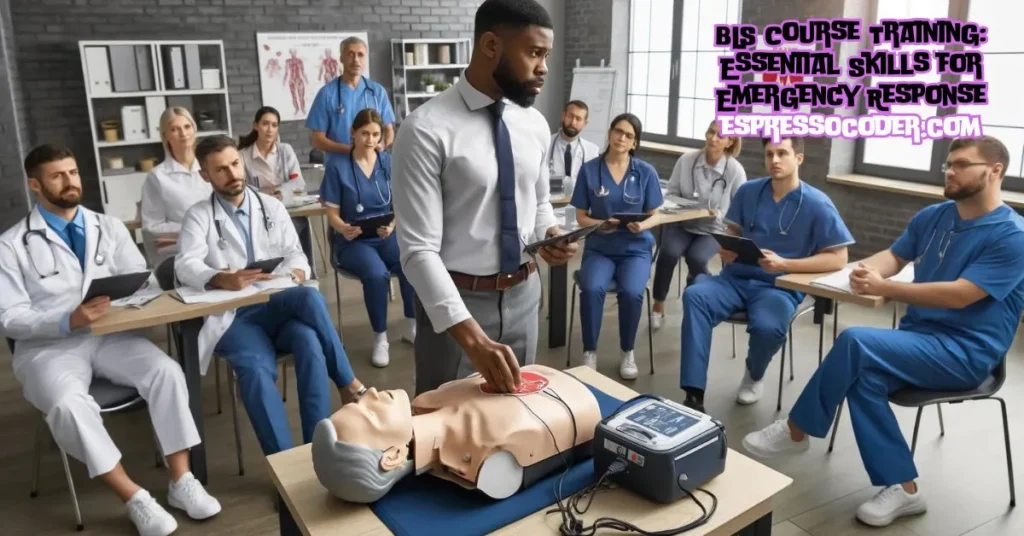Contents
Introduction
Basic life support (BLS) is a skill you need to administer during a cardiac or respiratory emergency. By administering these lifesaving techniques, you ensure that the patient’s vital internal organs continue to function and that they receive optimum blood and oxygen flow inside their body. Intervening using BLS techniques in a timely manner can help improve a person’s chances of survival during an emergency.
In this article, we will look at the importance of administering BLS on time and how taking the course can help you ensure preparedness during emergencies.
The importance of BLS training
The BLS course is important as it teaches you how to deal with cardiac and respiratory emergencies. With proper BLS training, you develop the requisite skills to promptly and effectively administer techniques that can help revive an unconscious person. These skills include administering CPR, chest compressions, giving rescue breaths, and even using automatic external defibrillators.
Essential aspects of a BLS course
Here is an overview of the topics that you will be covering as part of the BLS course:
● Recognizing emergencies
The first set of skills taught in a BLS course is the ability to identify when an emergency arises. You will learn to recognize signs of distress and navigate how to help the patient. As a part of this training, you will also learn how to deal with an unconscious patient and the ways to revive them carefully.
● Using emergency services
As soon as you recognize distress or emergency signals, you need to call for professional medical assistance, like 911 or a local emergency number. BLS training teaches you to multitask and call for advanced medical help when handling a patient. While the paramedics arrive, you need to start preparing to administer BLS techniques to keep the patient’s blood and oxygen flow going.
● Breathing and pulse
Before proceeding with any medical intervention, you need to check the patient’s heartbeat and pulse. Only if the patient’s heartbeat and pulse are normal should you administer CPR.
● Chest compressions, rescue breaths, and the use of AEDs
Administering rescue breaths and chest compressions as part of CPR and BLS helps blood flow to the vital organs. You will be taught to identify how many chest compressions and rescue breaths to administer and how to use automated external defibrillators (AEDs). AEDs are portable devices that restore the heart to its normal rhythm by sending electric shocks in case of sudden cardiac arrest.
● Choking relief
BLS techniques include methods to relieve choking, such as the Heimlich maneuver, which helps clear obstructed airways. You will learn these techniques during your BLS training.
● Effective communication
Clearly and effectively communicating with emergency services, other first responders, or bystanders during emergencies is essential. This helps save time and ensure that the right help arrives in a timely manner. BLS training teaches you how to collaborate, coordinate, and delegate tasks to people around you effectively during emergencies.
Who should get a BLS certification?
Unlike a CPR course, BLS goes beyond the basic resuscitation techniques, providing you with a deeper understanding of emergency medical procedures. It is designed primarily for healthcare workers, but those regularly exposed to situations where cardiac emergencies are likely to occur can also take it. Some professions where a BLS certification can be beneficial are:
1. Healthcare professionals
Doctors, nurses, paramedics, EMTs, medical assistants, and all healthcare workers who are at the forefront of responding to medical emergencies benefit greatly from BLS training.
2. First responders
Firefighters, police officers, and other emergency personnel are often the first on the scene of emergencies. BLS training equips them with the skills and knowledge needed to provide life-saving interventions until advanced medical help arrives.
3. Lifeguards
Lifeguards play a crucial role in ensuring the safety of swimmers and beachgoers. With BLS certification, lifeguards are prepared to respond to emergencies such as drowning, cardiac arrest, and other water-related incidents effectively.
4. Those in high-risk environments
Individuals working in high-risk environments, such as construction sites, industrial settings, or remote locations, may encounter situations where cardiac emergencies are more likely to occur. BLS certification provides them with the skills necessary to handle such emergencies with confidence and competence.
Conclusion
Training in BLS techniques gives you the skills you need to act quickly, promptly, and effectively during life-threatening situations and emergencies. A BLS course covers the necessary knowledge and information to intervene during an emergency. BLS training also imparts the confidence to practice and demonstrate these life-saving techniques during real-life emergencies and stressful situations. Sign up for a BLS course today to train and become a valuable member of your community.

